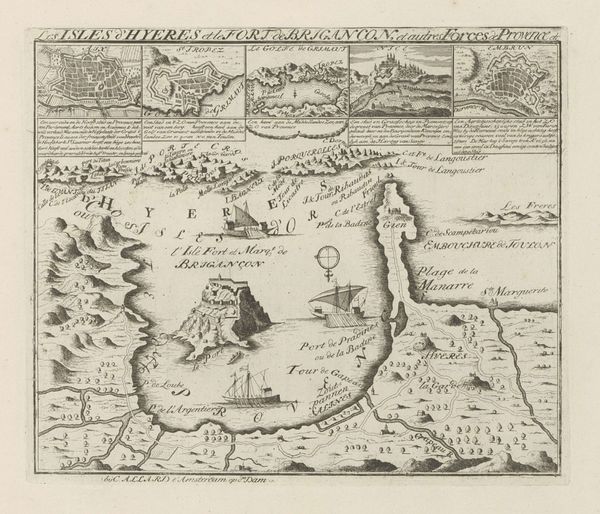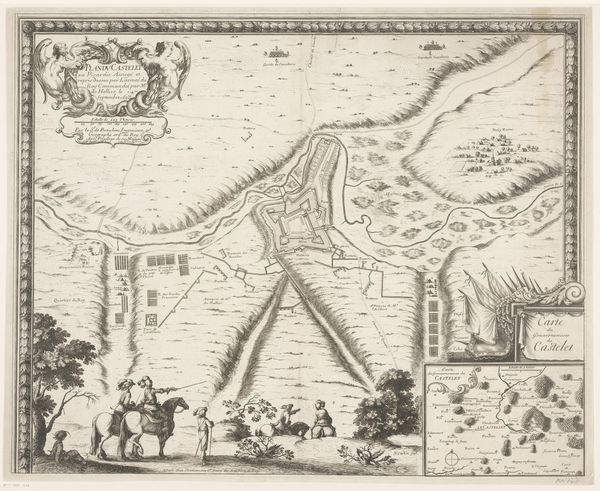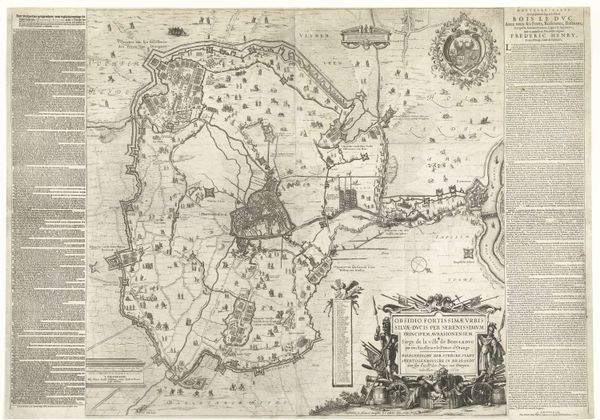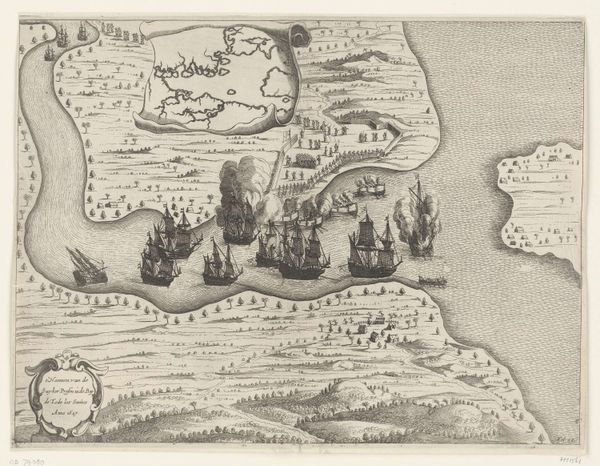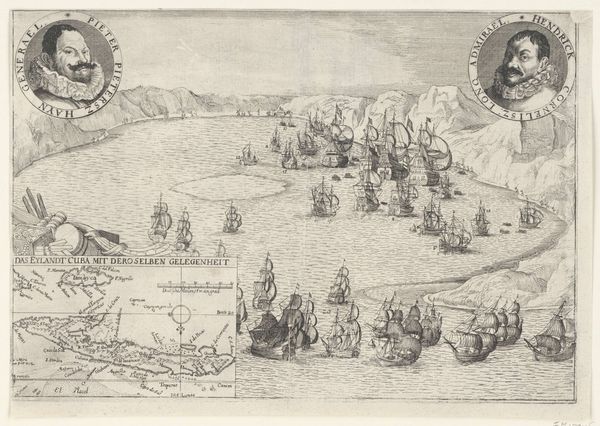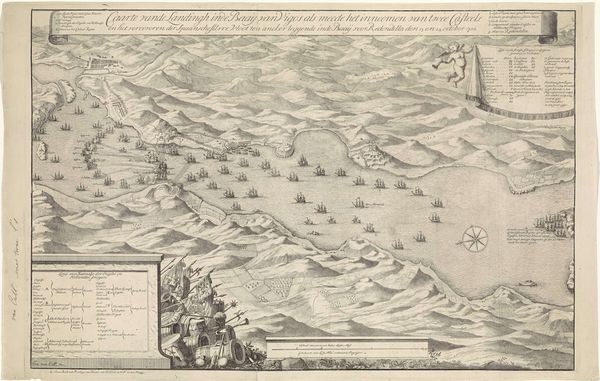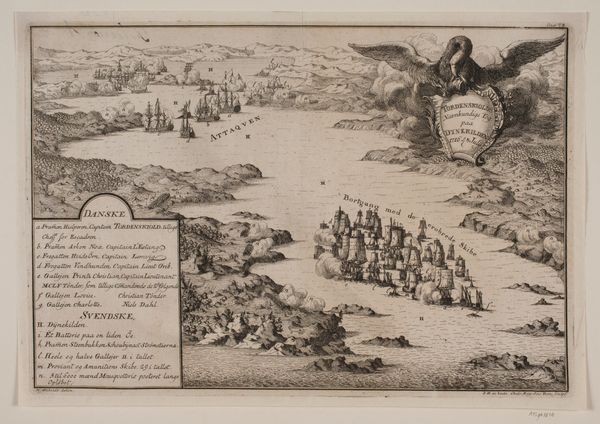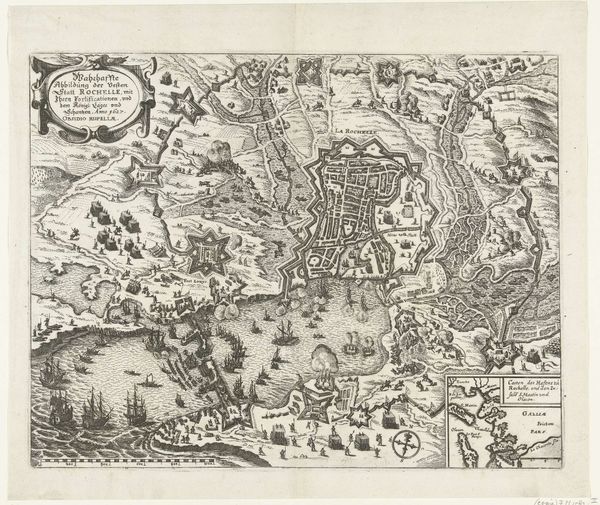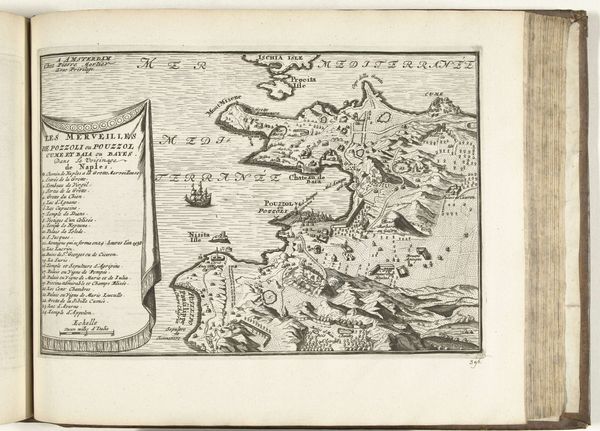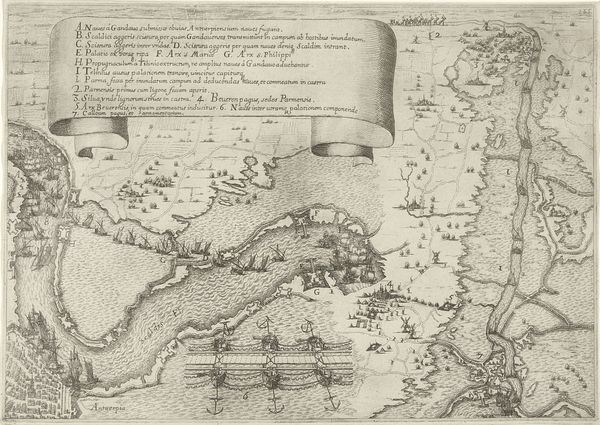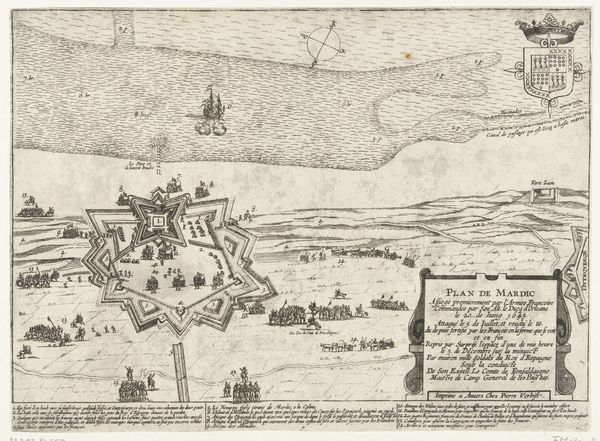
drawing, print, ink, engraving
#
drawing
#
narrative-art
#
baroque
# print
#
ink
#
cityscape
#
history-painting
#
engraving
Dimensions: height 431 mm, width 488 mm
Copyright: Rijks Museum: Open Domain
Curator: This is "Nederlaag der Zweden op Funen, 26 november 1659," created in 1659 by Salomon Savery. It’s an engraving printed with ink. Editor: It depicts quite a detailed scene—it almost feels like a map with the placement of different troops. I’m curious about why this event was documented in this particular style. What’s your interpretation of this work, looking at its historical context? Curator: Precisely! It is as much a strategic overview as it is an artistic commemoration. Consider the socio-political function of prints like this. In the 17th century, prints were powerful tools for disseminating information and shaping public opinion. Savery's work isn't just showing us a battle; it's visually constructing a narrative of Dutch military triumph. How do you think the Dutch public perceived this image? Editor: Probably with a sense of national pride, a kind of propagandistic victory announcement? The inclusion of what looks like the city layout might further emphasize what they were fighting to defend. Curator: Exactly. And think about the commissioning of such a work. Wealthy merchants, the state, or even military leaders likely funded it. This highlights the intertwined relationship between art, power, and the burgeoning Dutch Republic’s self-image. What aspects of the print do you see that directly relate to this sense of power? Editor: Well, there's the strategic overview, giving a god-like perspective. Then there are those triumphant figures at the bottom, with the weaponry. It almost creates a hero narrative. It's as if the image is performing the very victory it depicts! Curator: Yes, that's a fantastic point. The composition serves to legitimise and celebrate Dutch power on a global stage, a vital act in establishing the Republic's influence. Editor: Seeing it as more than just art, but a potent piece of political communication gives me a whole new perspective on this work. Curator: Indeed. Understanding the print culture and the politics of imagery opens up new avenues to appreciating its true significance.
Comments
No comments
Be the first to comment and join the conversation on the ultimate creative platform.
